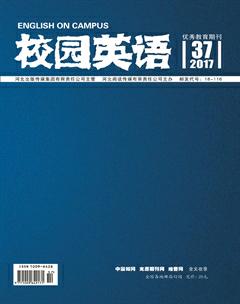A Brief Analysis of Error Analysis
She+Ali
【Abstract】This paper makes a brief analysis on the Error Analysis, and it is hoped to be helpfu to the English teachers.
【Key words】Error Analysis; Seond Language Acquisition; Procedure
Contrastive Analysis (CA) predicted that all errors would be caused by interference from the first language (L1), which was shown to be unfounded. Second Language Acquisition (SLA ) studies showed convincingly that the most of errors could not be traced to L1. Such studies became common, and a book-length treatment of the topic appeared in 1974 by Richards who proposed Error Analysis (EA) as a replacement for CA (Wang, 2009).
1. Defition of Error Analysis
In the 1950s and 60s, CA, constrasting the learners native language and the target language, is the most popular method in the field of SLA. When it came to 1970s, a new method investigating the learners language emerged, which is called Error Analysis (EA). In Corders view (1981), the following five steps collecting samples, identifying errors, describing errors, explanaing errors and evaluating errors constitute the EA research.
2. The Procedure of Error Analysis
2.1 Collecting samples
The first step is to decide what kind of samples to be chosen and how to collect them. EA has three types in terms of the size of the samples. The first type is a large sample. Several samples of languge use were collected from a great number of learners to edit a whole list of errors that can represent the entire population. The second one is a specific sample. It is a sample collected from a limited learners. The third is an incidental sample. It is a sample of a single learner.
2.2 Identifying errors
Once the samples were collected, the errors have to be identified. In terms of an error, it refers to a deviant form of the targt language. But people have different understandings towards the definition. On the one hand, there are some doubts about which variety of the target langague can be seen as the norm. On the other, how can we tell errors from mistakes?When a learner is lack of knowledge of the target language, an error occurs and it means a lack of competence. However, when a learner cant perform his competence, a mistake may take place.
2.3 Describing errors
The errors can be described and classified after they are identified. Several ways can be taken to do this. One of them is to classify errors on the base of linguistics. This type is colsely connected wih a traditional EA for educatinal purpose. Another way is to classify general ways where the learners utterances are different from the reconsructed target-language utterances.
2.4 Explanaing errors
Explain why these errors occur or where they come from. Explanation is analyzing the souce of the error and explaining why it was made. This step is the most important in SLA research. According to Ellis, the error source may be psycholinguistic, socillinguistic, epistemic etc.. Psycholinguistic sources are about the essence of L2 language knowkedge and difficulties the learners have in the process of learning. Socillinguistic sources are about the learners ability to make their langugage adjusted to the social context. Epistemic sourecs are about the learners world knowledge.
2.5 Evaluating errors
Khalil (1985) puts forward three criteria:intelligibility, acceptability and irritation. Intelligibility is about which errors can be understood. Acceptrability is about how to judge the seriousness of an error. Irritation is about the response with emotion and is also related to the frequency of errors (Ellis 1997, 1999)
3. Criticisms of the CAH
EA made the first step to study the learner language to find how learners acquire a second language (L2). It has made a substantial contribution to SLA research. “The most significant contribution of Error Analysis, … lies in its success in elevating the status of errors from undesirability to that of a guide to the inner workings of the language learning process.” (Ellis, 1999)
References:
[1]Corder S P.Error Analysis and Interlanguage[M].Oxford:Oxford University Press,1981.
[2]Ellis R.SLA Rsearch and Language Teaching.[M].Oxford: Oxford University Press,1997.
[3]Ellis R.Understanding Second Language Acquisition[M].上海:上海外語教育出版社,1999.
[4]Khalil.The Study of Second Language Acquisition[M].上海:上海外語教育出版社,1985.
[5]王棟.An Introduction to Second language Acquisition[M].濟南:山東大學出版社,2009.
作者簡介:佘阿莉,女,碩士,副教授,研究方向:二語習得、語料庫語言學等。

